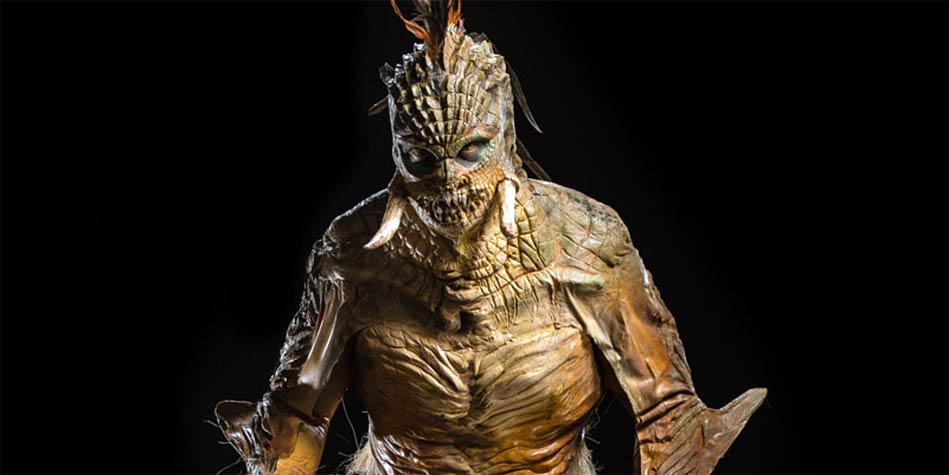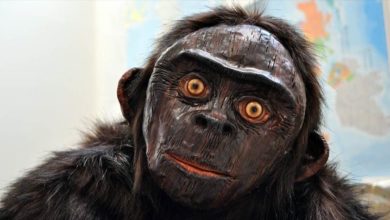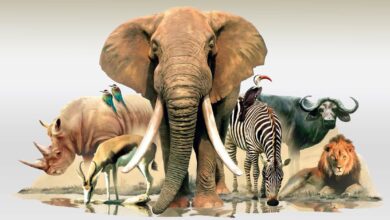Bunyip – Aboriginal evil ghost?
Bunyip – mythical creature from Australia
In every culture, there is a figure of the evil spirit, the demon, who hunts people. The Slavs had many such demons: Bies, Lesza, Topielica, Upiór… One can mention almost endlessly. But while our pagan beliefs are rather clear about the division between good and evil, in Aborigines this is not so obvious. The Bunyip, described by us, although it is characterized as great and terrible, could be not only the equivalent of a demon, but also an angel, and perhaps the god himself.
Places of occurrence
According to the Australian Aborigines, Bunyip lives in lakes, rivers and almost all of Australia’s water reservoirs, mainly in Victoria, New South Wales and the Australian Capital Territory. The people who visited Tasmania also spoke about the dog-like creature. Most of Bunyip’s reports are from the 19th century.

Characteristic
Appearance
The issue of Bunyip’s appearance is not obvious, as there are reports of water creatures resembling a dog or a seal. Many people also describe a creature with a long neck and a small head. It seems to have a lot to do with its size; Bunyip resembling a seal or dog reaches 1.2-1.8 m (3.9 – 5.9 ft) long, it is abundantly covered with long, black or dark brown hair. On the other hand, those endowed with a long neck measure 1.5-40 m (4.9 – 131 ft) long and are covered with dark fur.
A round head resembling a bulldog appears in a dog or seal aquatic creatures. There are big tusks in the jaws and the ears are very well visible. They do not have tails, but have long whisker and fins. Bunyips with long necks have small canines and splendid ears and their heads resemble more a horse or an emu than a dog. A long, about 1 meter (3.3 ft) long, slender neck is sometimes covered with a mane. There are also skin folds around the neck, and the tail resembles that of a horse.
Lifestyle
Aborigines describe Bunyip as an amphibious animal, which becomes active only at night. His home is lakes, rivers, oxbows, streams, water holes, billabongs. He has great swimming skills, he can move in water very quickly thanks to fins or paws. He also likes to make numerous sounds resembling a loud roar.
According to many legends, Bunyips are dangerous creatures for people, mainly women and children, whose meat is a real delicacy for them. Most often, however, they feed on crabs, and eggs lay in burrows created by the platypus.

How was Bunyip created?
Charles Fenner in the thirties of the twentieth century suggested that Bunyip appeared in the minds of indigenous people of Australia as a result of a mistake. According to the geographer, the Aborigines called Bunyip the seals sometimes floating in the rivers of Murray and Darling. Confirmation of this thesis is that seals occasionally appear inland, and smooth fur, round, large eyes and flashy roars are the hallmarks of both seal and Bunyip.
It is also possible that the reason for the creation of the Bunyip myth is the so-called cultural memory of large extinct Australian marsupials of the genus Diprotodon, Nototherium, Palorchestes or Zygomaturus. Perhaps, meeting the remains of unknown animals, the natives gave them their own name and functions. This would be confirmed by the findings of 1830, when Bushman George Rankin discovered strange fossils in the Wellington cave. Reverend John Dunmore Lang from Sydney said that the interesting find is proof of the flood. The spirituality of the situation was trampled over by the British anatomist Sir Richard Owen, who determined that the extraordinary fossils belonged to the gigantic marsupials of the genera Diprotodon and Nototherium.
It is also possible that the term “Bunyip” is dominated by an Australian bittern (Botaurus poiciloptilus). In the breeding season, this swamp bird calls its partner with a low voice.
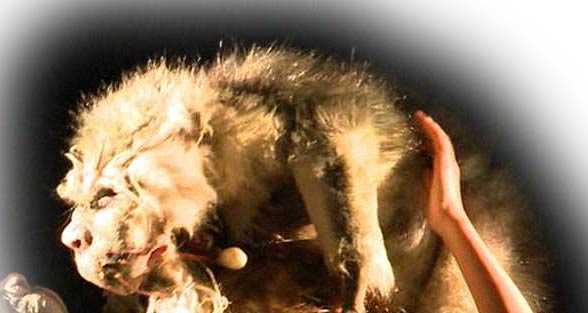
Selected reports about Bunyip
As we have already mentioned, the most reports on Bunyip’s observation date back to the 19th century. One of the most interesting is the one from 1821, when politician and journalist Edward Smith Hall announced that he saw a creature with the head of a bulldog in Lake Bathurst. Interestingly, Hall saw the creature a second time, a year later. This time, however, it had a long neck. Hall also claimed that for the second time he saw the creature from a distance of about 270 m.
Many years later, in 1846, Atholl Fletcher discovered a fragment of an unusual skull on the Murrumbidgee River (New South Wales). It measured about 20 cm long, but its most interesting feature were eye sockets located very close to the upper jaw. Researcher James Grant announced, after analyzing the findings, that the skull belonged to the embryo of an unknown animal. Soon after, William S. Macleay stated that it was a deformed part of the skull of a young horse.
Richard Owen, on the basis of the skull photography alone, thought that it belonged to a calf. After analysis, it was passed to the Australian Museum in Sydney. It was exhibited there for only 2 days as an exhibit, but it was lost in circumstances unknown to this day. This event has become the beginning of an explosion of information about Bunyip. It turned out suddenly that many more people saw the unusual water animal.
The 20th century was also not free of reports on Bunyip. The strange creature was mentioned by O. Davis and W. Harrison, who supposedly saw Bunyip on the west coast of Tasmania on April 20, 1913. They spoke of a fast floating animal, measuring 1.2 m (3.9 ft) in height and 5 m (16 ft) in length, equipped with a small head and very long neck. His body, covered with brown hair, was supported on four limbs.
Bunyip was still mentioned in the 1960s. It was reported by farmers, tourists and indigenous people of Australia who allegedly watched the creature in the Macquarie River flowing through New South Wales.
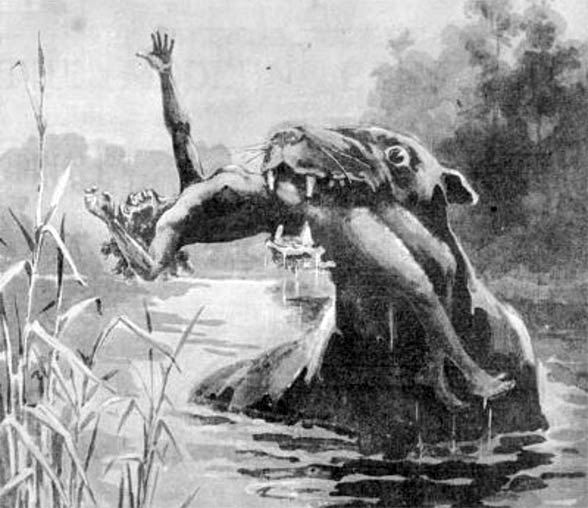
Detailed data / dimensions
Bunyip
- Body length: 1.2 – 40 m (3.9 – 131 ft)
- Occurrence: Australia (mainly New South Wales, Victoria and Australian Capital Territory) and Tasmania
Bunyip – other names used in different regions of Australia:
- banib, bunnyar, marghet (Western Australia)
- bunyup, Burley beast, dongus, gauarge (New South Wales),
- car-bunyah (the Channel Country region, located mostly in Queensland)
- gu-ru-ngaty (Thurawal, New South Wales)
- kajanprati, katenpai, kianpraty (Viktoria)
- kine praty, kinepràtia, kuddimudra, mirree-ulla (Wiradhuri, New South Wales)
- mirriola(Barwon River, New South Wales)
- mochel, moolgewanke, munni munni (Queensland)
- moo-roo-bul, toor-roo-don, tumbata (Viktoria)
- tunatpan, waa-wee, wangul (Western Australia)
- too-roo-dun (Westernport District, Victoria)
- wee-waa (the city of Narrander in New South Wales)
- wouwai (near Lake Macquarie, New South Wales)
- wowee, wauwai (Hunter River, New South Wales)
Bunyip – interesting facts
- The word bunyip probably comes from the Aboriginal language, but it cannot be translated. It seems that it means “devil”, “angel” or “god”. Australian Aborigines use this word today to describe something mysterious, dangerous and terrifying at the same time. It is also often used to describe fantastic and even funny things.
- The word bunyip appears for the first time in the Sydney Gazette in 1812.
- Since no reports of Bunyip have been heard for years, cryptozoologists are afraid that he may be an extinct animal.
- According to various Aboriginal descriptions of Bunyip, it appears that this creature could be covered not only with hair, but also with feathers or even scales like crocodiles.
- Currently, some researchers believe that aboriginal stories about creatures can have a basis in reality and describe extinct about 50,000 years ago.


